Your Settling point theory images are available. Settling point theory are a topic that is being searched for and liked by netizens today. You can Get the Settling point theory files here. Find and Download all royalty-free images.
If you’re searching for settling point theory images information linked to the settling point theory topic, you have pay a visit to the right blog. Our site frequently provides you with hints for viewing the maximum quality video and picture content, please kindly search and find more enlightening video content and images that match your interests.
Settling Point Theory. Settling Point Theory. A more accurate model is the settling point. According to this theory our weight and how much it changes from that set point might be limited. The set point and settling point models for the regulation of body weight and adiposity are a reflection of a broader divide in our conceptualisation of the obesity problem.
 Meet Amanda What Is Set Point Theory Short Video Youtube From youtube.com
Meet Amanda What Is Set Point Theory Short Video Youtube From youtube.com
The historical explanations of obesity started with set-point theory which was then reconceptualized into the settling-point theory. The dieter is in equilibrium. The settling point model postulates that there is little active regulation towards a predefined body weight but that body weight settles based on the resultant of a number of contributors represented by the individuals genetic predisposition in interaction with environmental and socioeconomic factors such as diet and lifestyle. Settling point theory in comparison to the aforementioned theories suggests that this model requires a minimum one parameter on the intake or output that is not regulated. Settling point hypothesis A theory that seeks to explain how the body controls weight. Set point theory states that our bodies have a preset weight baseline hardwired into our DNA.
An alternative model called the settling point model is based on the idea that there is passive feedback between the size of the body stores and aspects of expenditure.
According to this hypothesis weight is maintained when various metabolic feedback loopswhich are fine-tuned by relevant genessettle into an equilibrium with the environment. Effectively settling-point theory suggests that people are predisposed to be a specific weight. According to this hypothesis weight is maintained when various metabolic feedback loopswhich are fine-tuned by relevant genessettle into an equilibrium with the environment. The dieter is in equilibrium. An alternative model called the settling point model is based on the idea that there is passive feedback between the size of the body stores and aspects of expenditure. Often called a set point or settling point its the weight range where your body is most comfortable and where it really really wants to stay.
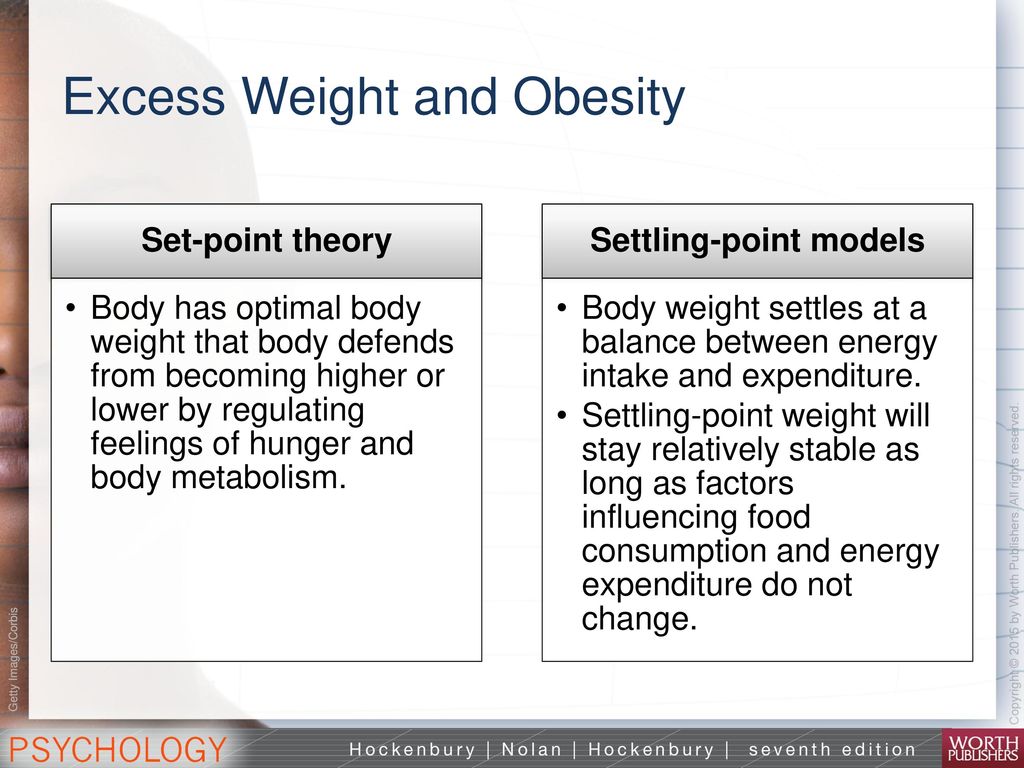 Source: slideplayer.com
Source: slideplayer.com
The physiological set point theory suggests that humans have a built-in regulatory system which prevents us from ever straying too far from our natural set point of weight and body fat. Developed by obesity researcher James Hill settling point theory proposes that changes in body weight are more related to the patterns of diet and activity that people settle into over time as habits and how that intersects. The dieter is in equilibrium. A more accurate model is the settling point. Like many things in life our weight is designed to return to the mean.
 Source: slideshare.net
Source: slideshare.net
However research eventually rejected this as an overall explanation due to the wide variation in points an individual can settle at. However research eventually rejected this as an overall explanation due to the wide variation in points an individual can settle at. The settling point model postulates that there is little active regulation towards a predefined body weight but that body weight settles based on the resultant of a number of contributors represented by the individuals genetic predisposition in interaction with environmental and socioeconomic factors such as diet and lifestyle. Set point theory can be construed as implying weight regulation in a wide or tight range around the set point in a symmetric or in an asymmetric manner ie. In turn metabolic changes limit further weight.
 Source: fadfreenutrition.nutricionalgrano.com
Source: fadfreenutrition.nutricionalgrano.com
The set point theory argues that the body has a certain weight that it maintains on its own such as 258 pounds. Settling point theory in comparison to the aforementioned theories suggests that this model requires a minimum one parameter on the intake or output that is not regulated. An alternative model called the settling point model is based on the idea that there is passive feedback between the size of the body stores and aspects of expenditure. According to the settling-point hypothesis weight is maintained when the various metabolic feedback loop which are fine-tuned by the relevant genes settle into an equilibrium with the environment. The settling point model postulates that there is little active regulation towards a predefined body weight but that body weight settles based on the resultant of a number of contributors represented by the individuals genetic predisposition in interaction with environmental and socioeconomic factors such as diet and lifestyle.
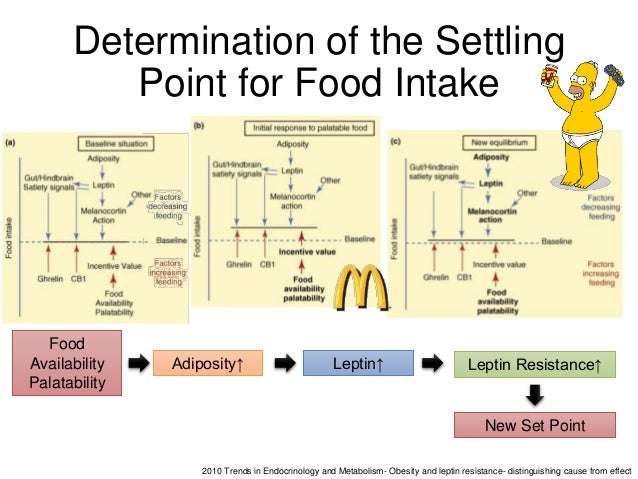 Source: slideshare.net
Source: slideshare.net
Settling-point hypothesis A theory that seeks to explain how the body controls weight. Settling point hypothesis A theory that seeks to explain how the body controls weight. Settling point theory on the other hand aims to explain the differences between individuals and their body weight and levels of body fat. According to this hypothesis weight is maintained when various metabolic feedback loopswhich are fine-tuned by relevant genessettle into an equilibrium with the environment. Advertisement If youve struggled to lose the same 10 pounds over and over again adopting a set-point mentality might help you find your bodys real happy weight and break the diet cycle for good.
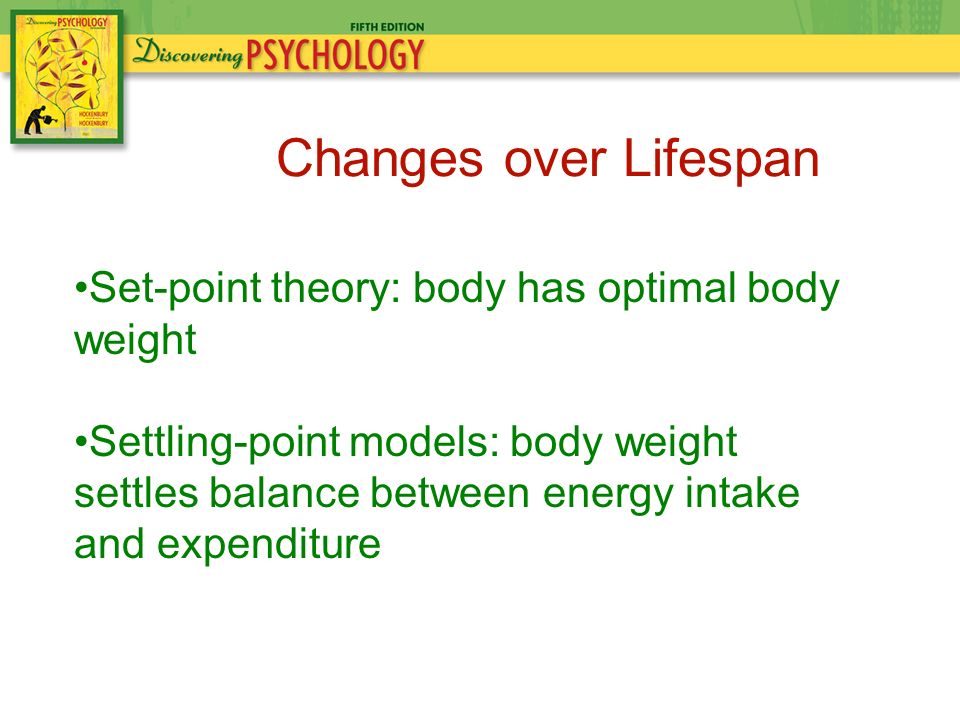 Source: slideplayer.com
Source: slideplayer.com
A more accurate model is the settling point. Effectively settling-point theory suggests that people are predisposed to be a specific weight. The theory asserts that the body adapts to our weight scale and sets it as a setpoint or a standard of what your weight should be. Settling point theory on the other hand aims to explain the differences between individuals and their body weight and levels of body fat. The set point model is rooted firmly in the domain of physiological and genetic determinism whereas the settling point model is more grounded in the effects of social nutritional and environmental factors.
 Source: slideplayer.com
Source: slideplayer.com
According to the settling-point hypothesis weight is maintained when the various metabolic feedback loop which are fine-tuned by the relevant genes settle into an equilibrium with the environment. Developed by obesity researcher James Hill settling point theory proposes that changes in body weight are more related to the patterns of diet and activity that people settle into over time as habits and how that intersects. According to this theory our weight and how much it changes from that set point might be limited. The theory asserts that the body adapts to our weight scale and sets it as a setpoint or a standard of what your weight should be. Effectively settling-point theory suggests that people are predisposed to be a specific weight.
 Source: fadfreenutrition.nutricionalgrano.com
Source: fadfreenutrition.nutricionalgrano.com
In other words a persons weight will vary and fluctuate according to a multitude of factors such as eating habits environmental to include physical activity. Settling Point Theory. The set point and settling point models for the regulation of body weight and adiposity are a reflection of a broader divide in our conceptualisation of the obesity problem. Often called a set point or settling point its the weight range where your body is most comfortable and where it really really wants to stay. However research eventually rejected this as an overall explanation due to the wide variation in points an individual can settle at.
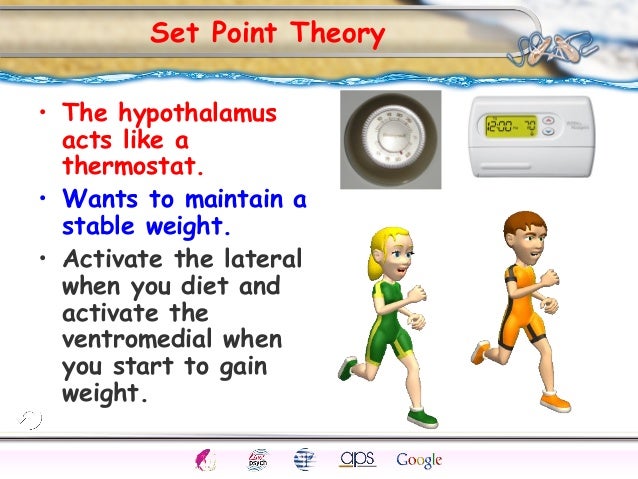 Source: slideshare.net
Source: slideshare.net
Increased obesity in the general population is linked to cultural and economic factors. The physiological set point theory suggests that humans have a built-in regulatory system which prevents us from ever straying too far from our natural set point of weight and body fat. If a dieter follows a specific lifestyle for a really long time their body composition will eventually become constant. A more accurate model is the settling point. According to the settling-point hypothesis weight is maintained when the various metabolic feedback loop which are fine-tuned by the relevant genes settle into an equilibrium with the environment.
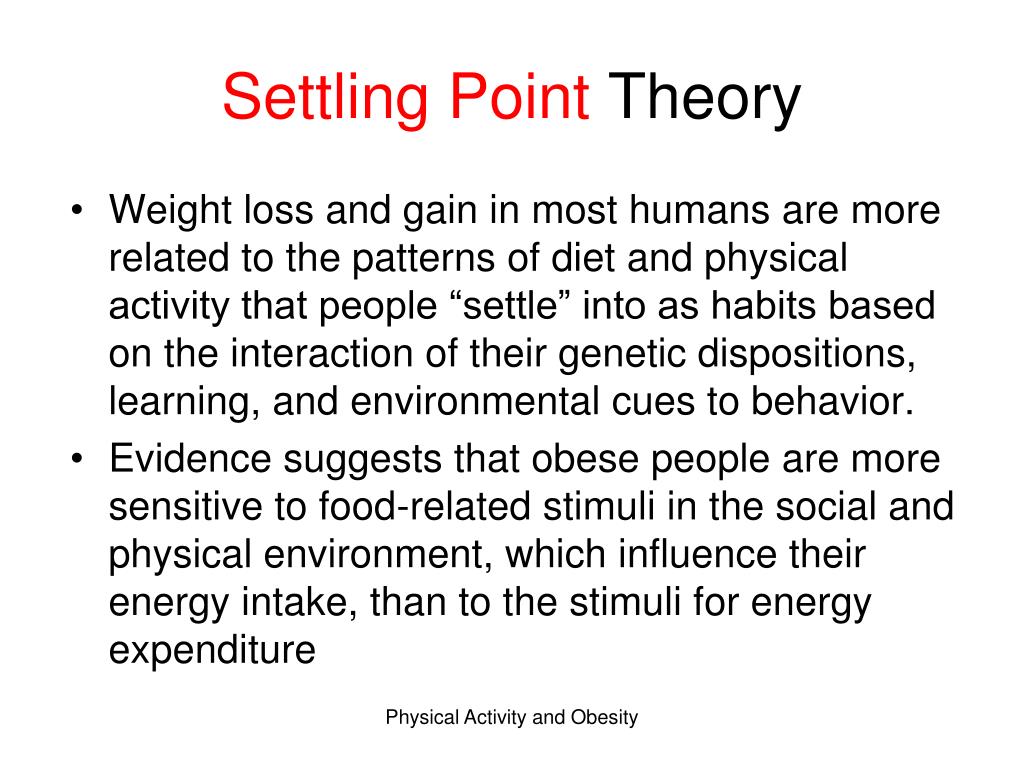 Source: slideserve.com
Source: slideserve.com
Settling point hypothesis A theory that seeks to explain how the body controls weight. Settling point hypothesis A theory that seeks to explain how the body controls weight. Settling Point Theory. The historical explanations of obesity started with set-point theory which was then reconceptualized into the settling-point theory. His idea is that weight loss and gain in most humans are more related to the patterns of diet and physical activity that people settle into as habits based on the interaction of their genetic dispositions learning and environmental cues to behavior.
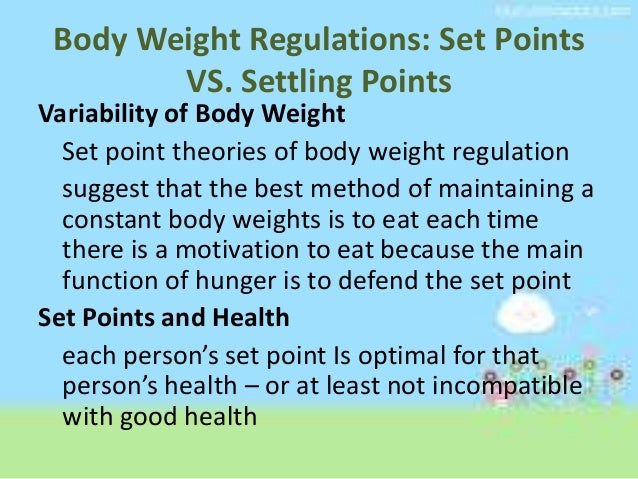 Source: slideshare.net
Source: slideshare.net
The physiological set point theory suggests that humans have a built-in regulatory system which prevents us from ever straying too far from our natural set point of weight and body fat. Settling point theory on the other hand aims to explain the differences between individuals and their body weight and levels of body fat. Treating weight gain and loss either the same or differently and may apply to regulation of body fat levels specifically in a multi-compartment model or to overall body weight. His idea is that weight loss and gain in most humans are more related to the patterns of diet and physical activity that people settle into as habits based on the interaction of their genetic dispositions learning and environmental cues to behavior. This contrasts against the settling point theory in which the body jostles with.
 Source: slideplayer.com
Source: slideplayer.com
An alternative model called the settling point model is based on the idea that there is passive feedback between the size of the body stores and aspects of expenditure. Effectively settling-point theory suggests that people are predisposed to be a specific weight. For this an alternative theoretical model is necessary which is available as the settling point model. His idea is that weight loss and gain in most humans are more related to the patterns of diet and physical activity that people settle into as habits based on the interaction of their genetic dispositions learning and environmental cues to behavior. The settling point theory was proposed by obesity researcher James Hill of the University of Colorado to help explain why overweight and obesity are more than problems of metabolism Hill Pagliassotti and Peters 1994.
 Source: bairfit.com
Source: bairfit.com
Following the failure of set-point theory externality theory. Effectively settling-point theory suggests that people are predisposed to be a specific weight. This model accommodates many of the social and environmental characteristics of energy balance but struggles to explain some of the biological and genetic aspects. Developed by obesity researcher James Hill settling point theory proposes that changes in body weight are more related to the patterns of diet and activity that people settle into over time as habits and how that intersects. This contrasts against the settling point theory in which the body jostles with.
 Source: bairfit.com
Source: bairfit.com
Settling Point Theory. The set point theory argues that the body has a certain weight that it maintains on its own such as 258 pounds. The theory asserts that the body adapts to our weight scale and sets it as a setpoint or a standard of what your weight should be. The dieter is in equilibrium. This contrasts against the settling point theory in which the body jostles with.
 Source: healthyliving24seven.wordpress.com
Source: healthyliving24seven.wordpress.com
Settling-point hypothesis A theory that seeks to explain how the body controls weight. The set point and settling point models for the regulation of body weight and adiposity are a reflection of a broader divide in our conceptualisation of the obesity problem. Following the failure of set-point theory externality theory. In other words a persons weight will vary and fluctuate according to a multitude of factors such as eating habits environmental to include physical activity. Developed by obesity researcher James Hill settling point theory proposes that changes in body weight are more related to the patterns of diet and activity that people settle into over time as habits and how that intersects.
 Source: bairfit.com
Source: bairfit.com
The dieter is in equilibrium. In turn metabolic changes limit further weight. According to this theory our weight and how much it changes from that set point might be limited. For this an alternative theoretical model is necessary which is available as the settling point model. An alternative model called the settling point model is based on the idea that there is passive feedback between the size of the body stores and aspects of expenditure.
 Source: youtube.com
Source: youtube.com
According to this hypothesis weight is maintained when various metabolic feedback loopswhich are fine-tuned by relevant genessettle into an equilibrium with the environment. Set point theory can be construed as implying weight regulation in a wide or tight range around the set point in a symmetric or in an asymmetric manner ie. For this an alternative theoretical model is necessary which is available as the settling point model. The settling point of the output of the system since any change in the values of S G or H will alter the value of W and cause it to settle at a new value. Settling point theory on the other hand aims to explain the differences between individuals and their body weight and levels of body fat.
 Source: slideserve.com
Source: slideserve.com
Settling point theory in comparison to the aforementioned theories suggests that this model requires a minimum one parameter on the intake or output that is not regulated. Settling point theory in comparison to the aforementioned theories suggests that this model requires a minimum one parameter on the intake or output that is not regulated. The settling point of the output of the system since any change in the values of S G or H will alter the value of W and cause it to settle at a new value. The physiological set point theory suggests that humans have a built-in regulatory system which prevents us from ever straying too far from our natural set point of weight and body fat. The settling point model postulates that there is little active regulation towards a predefined body weight but that body weight settles based on the resultant of a number of contributors represented by the individuals genetic predisposition in interaction with environmental and socioeconomic factors such as diet and lifestyle.
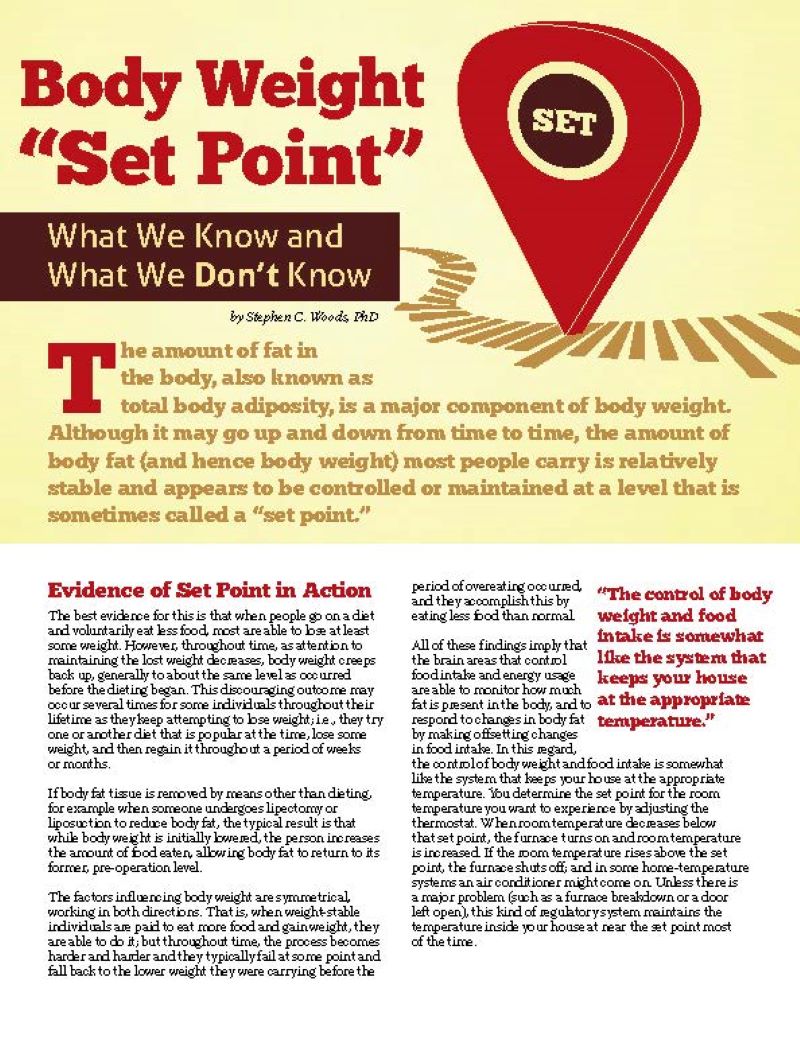 Source: obesityaction.org
Source: obesityaction.org
In turn metabolic changes limit further weight. According to this theory our weight and how much it changes from that set point might be limited. Often called a set point or settling point its the weight range where your body is most comfortable and where it really really wants to stay. Set point theory states that our bodies have a preset weight baseline hardwired into our DNA. If a dieter follows a specific lifestyle for a really long time their body composition will eventually become constant.
This site is an open community for users to share their favorite wallpapers on the internet, all images or pictures in this website are for personal wallpaper use only, it is stricly prohibited to use this wallpaper for commercial purposes, if you are the author and find this image is shared without your permission, please kindly raise a DMCA report to Us.
If you find this site serviceableness, please support us by sharing this posts to your own social media accounts like Facebook, Instagram and so on or you can also bookmark this blog page with the title settling point theory by using Ctrl + D for devices a laptop with a Windows operating system or Command + D for laptops with an Apple operating system. If you use a smartphone, you can also use the drawer menu of the browser you are using. Whether it’s a Windows, Mac, iOS or Android operating system, you will still be able to bookmark this website.






